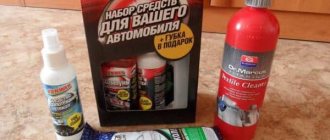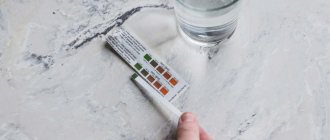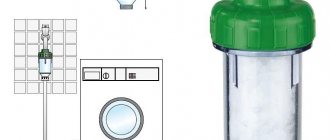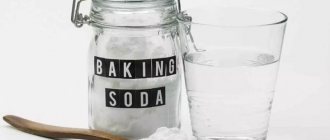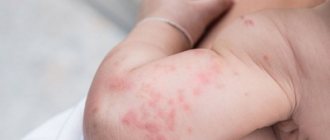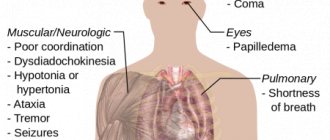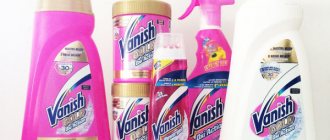Chloric (bleaching) lime has found its application in many industrial sectors. It is a powdery mixture of white or gray color, with a distinct chlorine odor. It is marketed in three types, which are distinguished by different active concentrations of chlorine: (35, 32, 28%). The chemical formula of bleach Ca(ClO)2, CaCl2 and Ca(OH)2 includes dicarboxylic acids, calcium salt and hypochlorous acids, oxychloride, slaked lime and hydrochloric acid salts HCl. Here is the formula for slaked lime. If the composition is exposed to direct sunlight, it will begin to deform. This destroys some active components. Accordingly, it is recommended to store the material in an airtight bag or special packaging protected from the sun.
Usage
In dry form, bleach is recommended to be used for:
- treatment of walls and ceilings of premises or other surfaces. Here about MDF for the ceiling;
- neutralization and destruction of pathogens;
- disinfection of toilets, wastewater disposal pits, waste containers.
It is worth noting that in its pure form, bleach can disinfect a surface only after it is moistened.
For maximum sterility of the treated area, it is rational to use chlorine-based solutions (10 or 20 percent).
A ten or twenty percent solution is mixed in this way. Two kilograms of dry composition are used, a liter of running water is added to it and thoroughly mixed until smooth. Then, you need to add up to ten liters of water to the resulting solution and do not forget to mix everything thoroughly.
Lime bleach
After this, the mixture is poured into a special container made of glass or enamel, transferred to a closed, semi-basement room and infused for more than a day. Every other day, the filtered solution is poured into the required vessel.
Before carrying out the necessary work, based on the solution discussed in the article, it is necessary to prepare a working mixture of the required consistency.
The method of preparing milk from chlorine and lime is similar to preparing ten or twenty percent bleaching lime. Only the composition does not need to be left for a day, but used immediately.
Safety precautions
Based on the level of impact on the body, bleach is classified as a toxic substance. Containers containing bleach may ignite when heated. In addition, the connection of the element with petroleum products, as well as impact and friction, leads to an explosion. After disinfection with chlorine-containing substances is completed, it is necessary to ventilate the room. Before starting work, be sure to read the instructions for using bleach. It is mandatory to use personal protective equipment:
- gloves
- respirators
- special safety glasses
- rubberized aprons.
In case of contact with the skin and mucous membranes, unpleasant pain, swelling and superficial ulcers of various sizes may occur. If such a substance enters the respiratory tract, the person will feel short of breath, have difficulty breathing, and will also have a sore throat. In severe cases, excessive lacrimation, abdominal pain, nausea and yellowing of the dermis are observed. First aid involves immediately flushing the entire affected surface of the body, including the eyes and nasopharynx, with copious amounts of water. After this, the victim needs to be taken outside and given milk to drink until the ambulance arrives.
Composition and characteristics, chemical formula of bleach
The composition of bleaching lime includes calcium salt of hydrochloric acid, hypochlorous acid and hydrates, quicklime in various ratios and dosages. Here is its formula. It all depends on the technical production conditions and storage conditions of the components of the product.
Compound
Read about the use of quicklime.
The material in question is extracted by passing it through lime, quenched with water (fluff). Here's how to use it. The result is a white powdery mixture with an unpleasant odor.
If a small amount of powder is poured into water, it will dissolve without residue.
The dry mixture is non-flammable. When acid and moisture enter into a chemical reaction, chlorine begins to be released abundantly. It can even take place at a minimum temperature of eighteen degrees. Bleaching lime used in specifications is not considered stable.
Formula
In open spaces, it absorbs moisture and carbon dioxide as much as possible. As a result, the dry mass becomes liquid or lumps appear in it.
If lime comes into direct contact with air, sunlight, heat, or high humidity, it will begin to break down and separate into parts.
This is also possible when it comes into contact with organic components (sawdust, coal dust, industrial oil). The process often occurs simultaneously or in parallel with spontaneous combustion.
For more information about bleach, watch the video:
What is
Essentially, it is chlorine dissolved in H2O. The solution, in addition to Cl molecules, also contains hypochlorous and hydrochloric acids.
In almost all plumbing systems, liquid intended for drinking is subject to chlorination. This is explained by the presence of a large number of harmful microorganisms that can provoke the occurrence of severe diseases. There are three other ways to destroy impurities dangerous to humans: irradiation, oxidation or boiling. However, boiling and irradiation is quite irrational, and oxidizing is dangerous.
There is also a fourth cleaning method - ozonation, but even in this case the problems that arise do not allow it to be effectively used in practice. Ozone disappears almost instantly. Therefore, at the moment when clean drinking reaches the water taps in apartments and houses, the result of the treatment will be insignificant.
Preparation
Bleaching lime is distinguished by its disinfecting abilities due to its active chloride components. In a humid environment, the material absorbs the lightest gas, which, when combined with oxygen, forms water. As a result of a chemical reaction, hydrogen chloride and acid are formed.
When exposed to a humid environment, the latter elements quickly decompose into oxygen and hydrogen, where the former element is distinguished by its oxidizing, antibacterial and deodorizing properties.
The latter element, in turn, turns into hydrogen chloride with increasing humidity. Bleaching lime is used for antiseptic treatment of premises and warehouses where animals were kept or their waste products were located.
The material described in the article is also used to disinfect drinking and waste water, nitrogen-potassium fertilizer, as well as wagons in which livestock were previously transported.
The material is used in powder form in rooms with high humidity, as well as for disinfecting wet soil. Bleaching lime in the required concentration can disinfect urine, residues of nitrogen-potassium fertilizer, and the wet floor of premises where animals are raised.
To prepare a disinfectant solution containing two percent of the active substance, you need to mix one hundred liters of water and eight kilograms of lime, which contains more than 40 percent chlorine.
The solution must be mixed in a barrel made of wood, glass or enamel. Here is the proportion of cement-lime mortar for plaster.
After 24 hours of settling and sedimentation, the upper transparent mixture is drained and used as a disinfectant. To prepare the disinfectant mixture, bleaching lime is poured into a barrel. At the same time, water is introduced into it in a thin stream.
The main thing is not to stop stirring the solution from the moment it is added. Then the rest of the water is added, the amount of which depends on the thickness of the finished mixture.
The prepared disinfectant material is used on this day or no later than 24 hours to disinfect the surfaces, partitions and walls of rooms where animals previously lived. Here about MDF for walls.
If you have pets at home
Those who live with cats and dogs know about specific problems that are becoming commonplace. These are not only urine stains, the smell from which is quite difficult to remove. Pets often get parasites, the larvae of which can wait on the floor for their time. Moreover, bleach for disinfecting premises can be used to destroy bacterial infections, including tuberculosis and viral infections, hepatitis, fungus, including candida, as well as all kinds of infections. Therefore, if you have pets, you should not forget about disinfection. But there is no need to use it constantly, especially since bleach is toxic. But periodically treating the room is not only possible, but also necessary.
Bleach is excellent at removing urine stains and odors, but for some animals, the smell of bleach itself is a stimulus to renew their “marks.” If your pet has this characteristic, then it is best to change the disinfectant.
Using bleach for disinfection
Bleach is used to treat animal cages in zoos or circuses, as well as bird feeders. It is added to the disinfectant mat and disinfectants. To increase bactericidal properties, it is recommended to add acid or sodium chloride to the composition.
If the disinfecting solution will be used at temperatures below zero degrees, antifreeze is added to it. The material discussed in the article in the form of a mixture or a lighter solution is used when disinfecting premises for acute viral diseases of animals:
- plague or foot-and-mouth disease (chlorine concentration should not exceed two percent);
- for zoonotic infectious-allergic diseases, infectious vaginitis of cows, for viral diseases in rabbits (the active concentration of chlorine should not exceed two and a half percent);
- pseudorabies, infectious bulbar palsy, infectious meningoencephalitis (the active concentration of chlorine should not exceed three percent);
- in case of infection of horses , widespread pneumonia, peripneumonia of cows (the active concentration of chlorine should not exceed four percent);
- for a disease caused by Koch's bacillus (the active concentration of chlorine should not exceed five percent).
In case of malignant carbuncle or anthrax, the room where the animals lived is cleaned with bleaching lime three times a day.
In this case, the active concentration of chlorine should not be less than five percent.
For maximum disinfection, it is necessary to use five percent bleach in combination with sulfuric acid in equal proportions. Here is the formula for soda lime.
Application
The temperature of the disinfecting solution should not exceed twenty degrees. To disinfect eggs, before placing them in the incubator, they are treated with a chlorine solution with a concentration of substances not exceeding one and a half percent. The eggs must remain in the solution for at least three minutes.
Bleaching lime is suitable for disinfecting drinking water, disinfecting water in reservoirs after it has settled (two hundred grams of material per twenty liters of sludge).
It has found its application for neutralizing toxic substances that can settle on the skin, soil or other surfaces.
Bleaching powder
Bleaching lime is also used to treat infected diseases: ulcers formed after the bite of a poisonous insect or snake, etc. Both domestic premises and industrial facilities with bleach
Room treatment
The substance has found its use as a sterilizer for dishes in which dairy products are stored; it is also used to treat industrial devices (two percent solution), car tires, chassis, and interior bodywork. Here we talk about how long it takes for car putty to dry.
The result is a disinfectant mixture with the components of methanal and chlorine.
For a square meter of surface to be treated, it is necessary to purchase fifteen grams of methanal and twenty grams of a technical mixture of hypochlorite, calcium chloride and hydroxide.
In this case, the relative humidity in the room should be within 90 percent. If bleaching lime is mixed with ammonium nitrate (lime GOST 9179 77, nitrogen salt and drinking water are added), the result is chlorine, chloramine and ammonium chloride. This combination of elements disinfects any surface.
At industrial production facilities where poultry is raised, the air it breathes is disinfected. This is conveniently carried out using chlorine-turpentine in the form of aerosols . In this case, you need to adhere to the correct ratio of active substances (four to one).
As a result, chlorine and turpentine begin to be actively released. The drugs are used at the following consumption: two grams of the material described in the article with an activity of more than thirty percent and half a liter of turpentine per cubic meter of water.
Disinfection is carried out even if there are birds in the room, but it is necessary to adhere to a rational temperature regime. For an infectious disease in rabbit hutches, a chlorine turpentine solution is prepared by mixing two grams of the material discussed in the article and 0.2-0.3 ml of turpentine.
Disinfection of the rabbitry
This solution will be enough per cubic meter of room. If a heating installation is used in rabbitries, it is recommended to place the reagents in a special tank. An aerosol with a smoky structure completely covers the entire room.
Disinfection for infectious diseases of rabbits is carried out up to four times over three days.
Additional processing can be carried out after half a month.
First aid for bleach poisoning
If a person has been poisoned by a chlorine substance, then you need to know what to do first. With proper first aid, it is possible to eliminate many dangerous consequences.
When intoxication has occurred at a medium and severe stage, in this case it is initially necessary to take measures to eliminate the victim’s contact with the chlorine element and seek help from doctors as soon as possible.
First aid contains the following recommendations:
- the person providing assistance must protect himself with a bandage to avoid inhaling harmful fumes;
- guarantee the victim a supply of clean air. But, if the level of intoxication is greater than the second, this will not help;
- if the solution enters the food tract, provide the person with plenty of drink , and also provoke a gag reflex. Then you need to drink pills of the drug that act as a strong adsorbent;
- as a result of eye damage, wash them with a weak soda solution;
- if the drug gets into the oral cavity, rinse thoroughly with soda, drawing this composition through the nasal passages;
- when there is a sore throat and intense coughing, it is necessary to take anti-cough pills for 3 days;
- in case of loss of consciousness, it is necessary to bring ammonia and try to bring the victim to his senses, and if breathing stops, try to perform an artificial “mouth to mouth” process;
- when poisoning is of the second and third level, and in a child it is necessary to call emergency medical care as quickly as possible.
For various, even minor, bleach poisonings, it is necessary to resort to medical professionals to conduct a full examination and undergo the necessary treatment to prevent undesirable consequences. Most people recover quickly from chlorine poisoning.
People who experience serious health effects (severe eye and respiratory irritation, severe cough) require hospital treatment.
conclusions
To disinfect a room where animals grow and reproduce, it is recommended to treat it with aerosols obtained by actively combining bleaching lime with formaldehyde or ammonium nitrate. This composition can also be used to treat hatching eggs.
A combination of methanal (thirty-eight percent solution) and lime (twenty-eight percent chlorine) is acceptable. Methanal and a technical mixture of hypochlorite, chloride and calcium hydroxide are diluted in special twenty-liter vessels.
After disinfection, the number of bacteria decreases significantly within a week. For preventive purposes, disinfection can be carried out at weekly intervals. Veterinarians recommend disinfection with aerosols when respiratory illnesses occur.
Dechlorination
When the concentration exceeds the established standards, the excess element is purified. This is done by adding substances to an already chlorine-containing liquid that bind excess and remove them from the composition. These helpers include: sulfite, sodium hyposulfite, sulfur dioxide.
The best solution to the problem is to use a carbon filter. Buying a suitable cleaning product is now quite easy. The market is flooded with numerous specimens, with the help of which you can effectively get rid of all unwanted impurities. Thus, for many years it has been successfully developing and producing water treatment equipment for domestic and industrial needs of consumers. Choosing their products is truly the right decision. After all, taking care of the health of our family and friends is everyone’s top priority.
Carbon elements in the filtration device eliminate unpleasant odor and taste, get rid of excess Cl, as well as unwanted organic matter. During the dechlorination process with coal, an oxidation reaction occurs. Cleaning duration varies from 2 to 8 minutes. The greatest efficiency can be achieved by backwashing.
The above methods for removing excess chloride can be used both in homes and for cleaning wells. When carrying out processing, the necessary precautions should be strictly observed.
